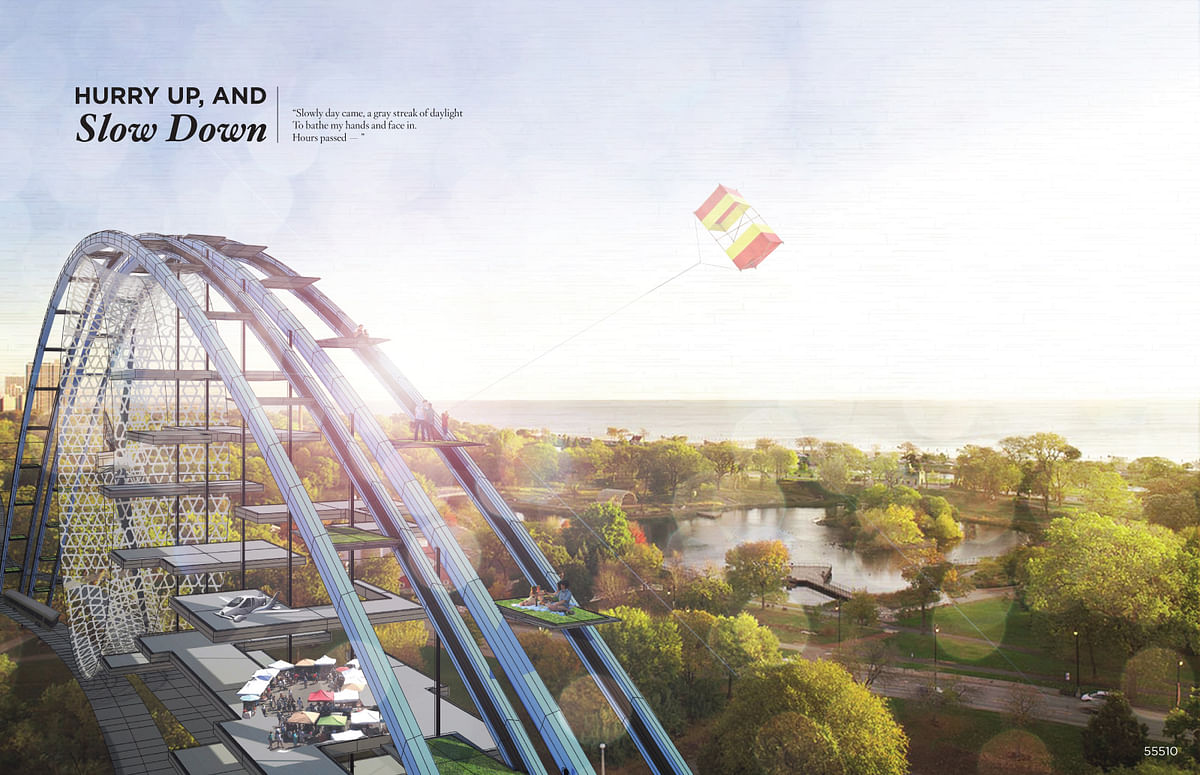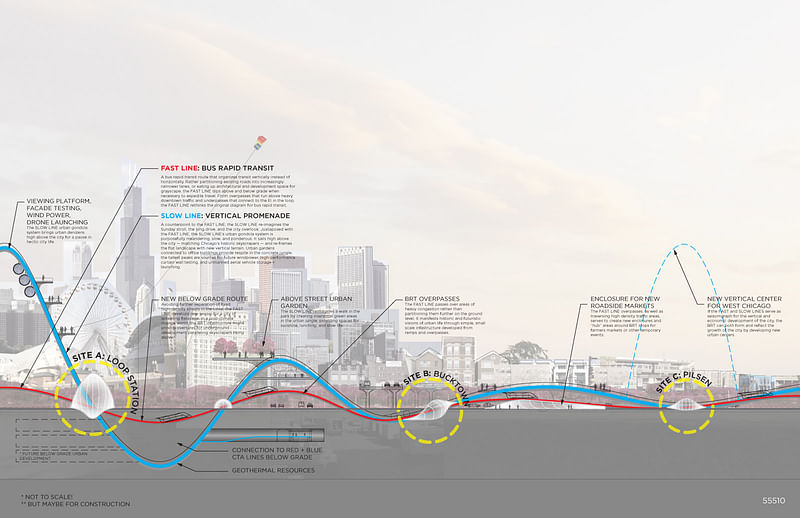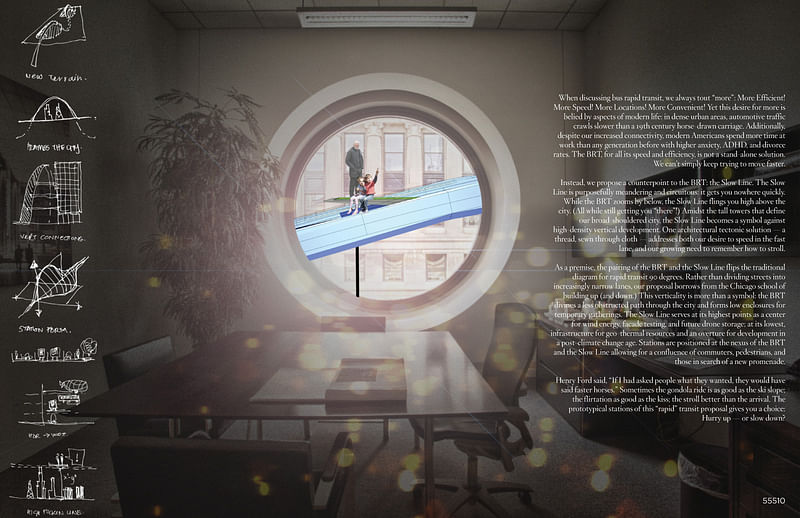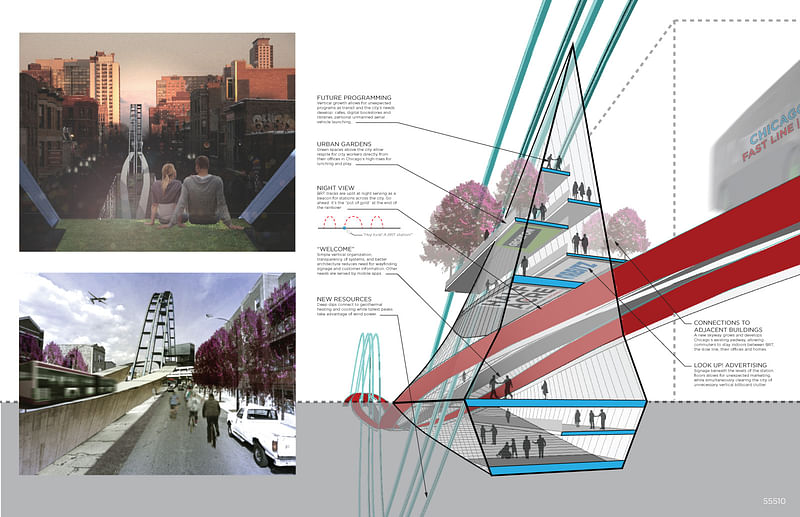Hurry Up and Slow Down - 2013 Burnham Prize NEXT STOP Citation
By Bustler Editors|
Monday, Jun 17, 2013

Related
In our previous post, we published the winning projects of the 2013 Burnham Prize Competition: NEXT STOP-Designing Chicago BRT Stations. The brief asked designers to envision iconic, functional and sustainable stations for Chicago’s planned Bus Rapid Transit (BRT) system.
One of the finalist entries, the concept "Hurry Up and Slow Down" by Ann Lui and Craig Reschke, was recognized with a Citation for proposing a counterpoint to a RAPID transit system: the Slow Line.
Project Description from the Architects:
When discussing bus rapid transit, we always tout “more”: More Efficient! More Speed! More Locations! More Convenient! Yet this desire for more is belied by aspects of modern life: in dense urban areas, automotive traffic crawls slower than a 19th century horse-drawn carriage. Additionally, despite our increased connectivity, modern Americans spend more time at work than any generation before with higher anxiety, ADHD, and divorce rates. The BRT, for all its speed and efficiency, is not a stand-alone solution. We can’t simply keep trying to move faster.

Instead, we propose a counterpoint to the BRT: the Slow Line. The Slow Line is purposefully meandering and circuitous: it gets you nowhere quickly. While the BRT zooms by below, the Slow Line flings you high above the city. (All while still getting you “there”!) Amidst the tall towers that define our broad-shouldered city, the Slow Line becomes a symbol against high-density vertical development. One architectural tectonic solution — a thread, sewn through cloth — addresses both our desire to speed in the fast lane, and our growing need to remember how to stroll.

As a premise, the pairing of the BRT and the Slow Line flips the traditional diagram for rapid transit 90 degrees. Rather than dividing streets into increasingly narrow lanes, our proposal borrows from the Chicago school of building up (and down.) This verticality is more than a symbol: the BRT divines a less obstructed path through the city and forms low enclosures for temporary gatherings. The Slow Line serves at its highest points as a center for wind energy, facade testing, and future drone storage; at its lowest, infrastructure for geo-thermal resources and an overture for development in a post-climate change age. Stations are positioned at the nexus of the BRT and the Slow Line allowing for a confluence of commuters, pedestrians, and those in search of a new promenade.

Henry Ford said, “If I had asked people what they wanted, they would have said faster horses.” Sometimes the gondola ride is as good as the ski slope; the flirtation as good as the kiss; the stroll better than the arrival. The prototypical stations of this “rapid” transit proposal gives you a choice: hurry up — or slow down?
Comment from the Competition Jury: This project was described by the jury as being a counterpoint to the current experience of commuting on public transportation. The "Slow Line" for Chicago provides a commentary on how we live today and how we might live in the future.
All images courtesy of Ann Lui and Craig Reschke.

Share
0 Comments
Comment as :